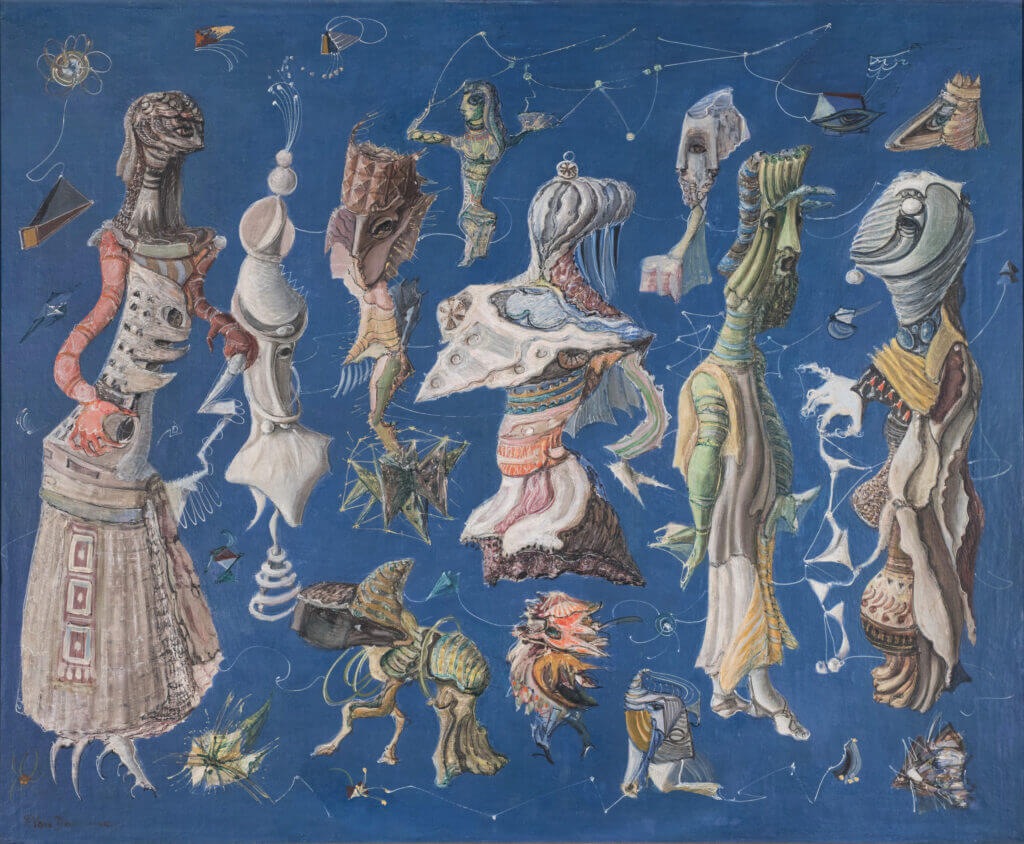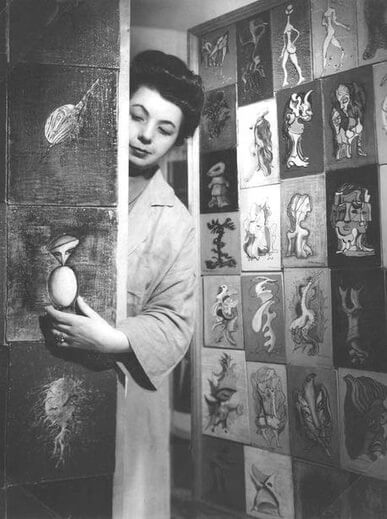Your currently viewing RAW Modern | Switch to RAW Contemporary
Surreal Composition, 1943
Although Suzanne Van Damme was born in Belgium, arguably the cradle of Surrealism, it was not until after she moved to Paris in the 1930s that she started to produce work of her own that was identifiably surrealist in spirit. By the late 1940s, to which period this picture dates, she was at the height of her powers – the intense blue background highlights the contours of each motif, creating a collage-like effect, that brings to mind the celestial maps of earlier centuries. Although this painting is rooted in the natural world, for example, in the marine-like forms (shell, clam, prawn and whale), it also has a supernatural feeling. Elements, such as the multi-faceted broken sculpture (seen middle right) add to the composition’s mysterious and vividly surreal spirit. The creature in the bottom centre of the canvas, bird-like with flowing feathers and small, claw-like feet, is a motif that appears entirely recognisable yet at the same time completely unfamiliar. This figure is reminiscent of the work of Hieronymus Bosch (1450-1516), and his depiction of surreal and unearthly beings, derived from a fusion of familiar forms in unlikely juxtapositions.
In the decade this picture was painted, in response to the challenges made by women fighting for equal rights, progress was made in overcoming some of the existing cultural and sexual stereotypes that were commonplace. Through her outstanding works Suzanne Van Damme contributed to this evolution, making a strong case for the parity of the sexes in the male-dominated sphere of surrealist art. But like many of the significant women painters of the movement, both in her lifetime and subsequently, the fight for recognition is still ongoing.

